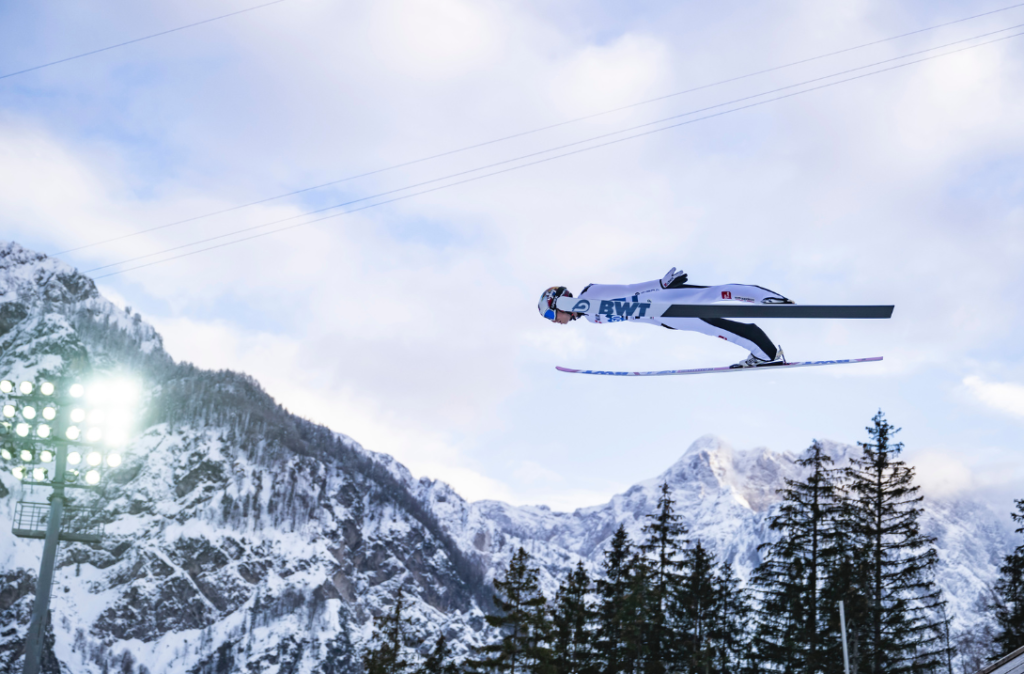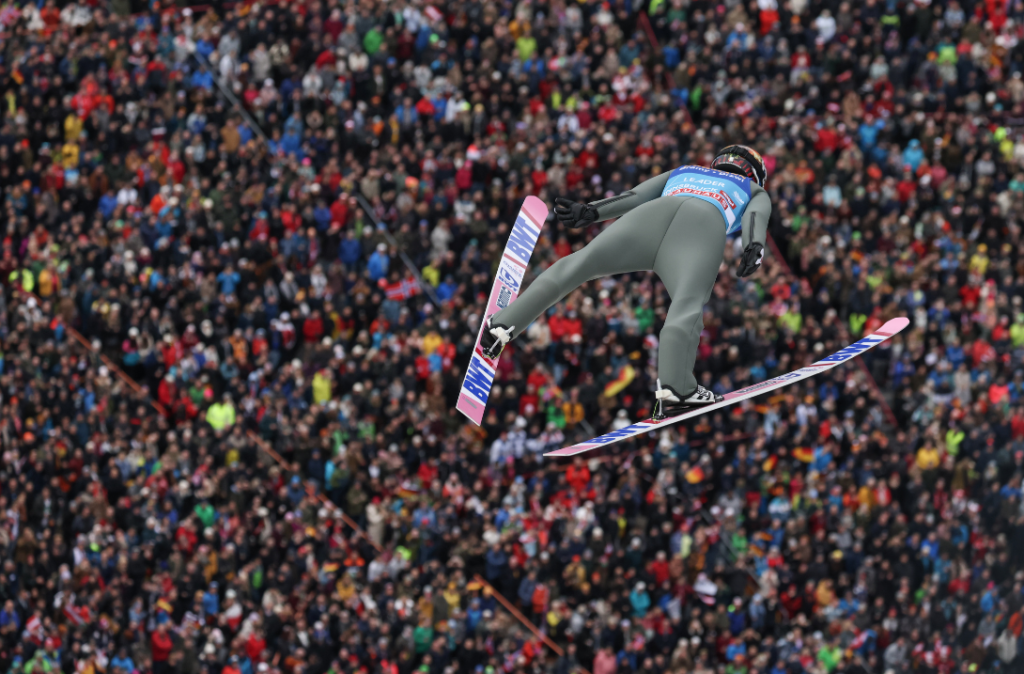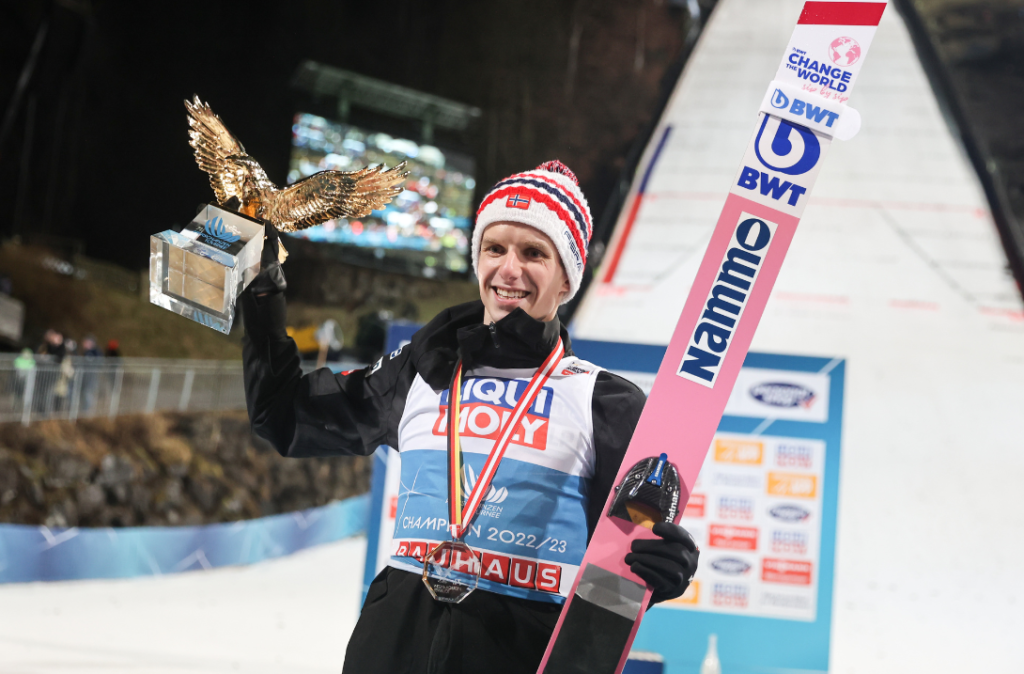There are many ways to approach the history of the Four Hills Tournament: Through statistics, anecdotes, heroic legends, curiosities, unique events or stories of triumphs and tragedies. Or via the Tournament ABC.
A - like alcohol
Alleged to have played a role in some competitions, it is known that Finland's Matti Nykänen was taken out of the race by his coach before the 1987 New Year's competition. Nykänen wanted to compete drunk. Compatriot Hemmo Silvenoinen had better luck after New Year's Eve 1955. The Finn buckled up despite plenty of residual alcohol - and won.
B - like "Buwi" Bradl
Was not only the first jumper to soar over 100 meters, but also the first tour winner. Today, the stadium in Bischofshofen bears the Austrian's name.
C - like champions
The true champions are the eagles from Austria and Finland, who have each won 16 tours so far. However, it has been nine years since the Austrian Eagles' last success with Stefan Kraft, while the Finns have now won 18.
D - as Dreikönigsspringen
Older than the tour, but an integral part of the event. Ski jumping has always taken place in Bischofshofen on January 6 since 1973.
E - like Eddie the Eagle
Not to be missed, of course. The Brit took part in the tour in 1987/88 and the following year. He crashed badly in Innsbruck in January 1989, breaking his collarbone and subsequently ending his career.
F - like flag dispute
One of the less glorious chapters of the tour. In 1959/60, the Federal Republic of Germany banned athletes from the GDR from competing under its own flag (the so-called "Spalterflagge"). As a result, the GDR and other Eastern Bloc countries did not take part in the tour.
G - like green line
A technical support for athletes, visitors and TV viewers that has been introduced several years ago. Currently signals the distance required for 1st place and projects it onto the landing slope.
H - like Helmut Recknagel
Was the first jumper to win the overall ranking three times. Best jumper of his time. More than 3 successes would have been possible - but the officials in East and West prevented this.

I - like Innsbruck
Ski jumping at Bergisl is special, and not just because you can see a cemetery from the inrun tower. The facility has been converted several times and has had a retractable take-off in the meantime. Unfortunately, it still lacks floodlights. This should change by 2025 at the latest.
J - like Jens Weißflog
Legend from Saxony! Weißflog won the tour 4 times and was the only jumper to win in both styles. Still holds the record with 10 daily victories.
K - like K-point
Whoever hits exactly this point, which is marked with a line in the slope, receives 60 distance points. This used to be the critical point up to which safe landing was possible. Today, the K-point is referred to as the construction point and is one of the initial parameters when building a ski jump
L - like Lucky Loser
An invention from the modern era of the tour. The 50 participants in the first round determine the 25 winners who reach the second round in direct duels; the five best-placed losers, i.e. the "lucky losers", complete the final of 30 jumpers
M - like Max Bolkart
Was the first West German overall winner of the tour, winning in the absence of Helmut Recknagel, which in no way diminished his triumph. Bolkart celebrated a home game and a home victory as Oberstdorf's starter, also winning the New Year's competition and in Innsbruck.
N - like New Year's jumping
The competition on the Olympic ski jump in Partenkirchen is older than the tour and is traditionally referred to as the forerunner of the tour. The New Year's ski jumping competition is traditionally the highlight of the tour, as it is the most watched and prestigious in the world
O - like Oberstdorf
Was not initially intended as a tour location, but was chosen over Berchtesgaden, Füssen and Oberammergau. Today a Mecca for Nordic skiing. The second venue after Partenkirchen for the first tour, the Allgäu was used for jumping on January 4, 1953.
P - like Posthotel Partenkirchen
Footnote to the tour: the "German-Austrian Ski Jumping Tour" was officially founded at the Posthotel Partenkirchen on December 14, 1952. However, the actual founding date was May 17, 1952, when the idea was launched at a night jumping event on the Seegrube above Innsbruck
Q - like qualification
Became necessary to reduce the overflowing fields of participants. Before the jumping, the fields of participants are reduced to the best 50 athletes, who can then compete in the first round.

R - like RTL
Took over the TV broadcast of the tour from ARD/ZDF on January 1, 2000. Shortly before the 2007/08 season, the private broadcaster withdrew from winter sports and the tour returned to the public broadcasters. Bayerischer Rundfunk had been broadcasting the New Year's Ski Jumping since 1956 and all four competitions from 1960 onwards
S - like Sven Hannawald
The jumper who was the first to win all four competitions in the 2001/02 season. This triumph is known as the "Golden Slam". After Hannwald, the DSV eagles were unable to celebrate another overall victory.
T - for Tyrolean meter
Are legend! When measurements were still taken by hand and the distance judges indicated the jump, one or two meters were sometimes added - depending on the country - and in Innsbruck the procedure was called the "Tyrolean meter".
U - like conversions
All ski jumps had them, Garmisch-Partenkirchen and Innsbruck even have new constructions. The Schattenbergschanze in Oberstdorf was given a reinforced concrete and laminated wood construction back in the early 1970s.
V - like V-style
Normal today, an innovation in the early 90s. The Swede Jan Boklöv spread the tips of his skis apart after take-off to gain more surface area. The change in style became established in the following years.
W - like distance measurement
Once done by hand. The process was then automated and electronic distance measurement is now commonplace. Measurements are taken from the middle of the foot and, although it would be much more accurate, at intervals of 50 cm.
X - like X-Trail - car
Was one of the valuable prizes offered by sponsors for the tour winner in 2004. The Norwegian Sigurd Pettersen was delighted to receive the special car from NISSAN.
Y - like Yukio Kasaya
Won the three competitions in Oberstdorf, Garmisch-Partenkirchen and Innsbruck in the winter of 1971/72. Then had to leave on the instructions of the team management, otherwise the Japanese athlete might have achieved the "Golden Slam" 30 years before Sven Hannawald. He went on to win the normal hill at the Olympic Games in Sapporo.
Z - like Zinkenschanze
Tour replacement venue in 1956, the ski jump in Bischofshofen could not be used at that time due to a lack of snow, so the team traveled to nearby Hallein and completed the fourth tour competition on the Zinkenschanze.
Fotos: K.Voigt Fotografie

